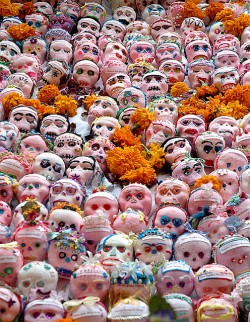by Amanda Kloer
August 10, 2010 @ 03:00PM PTTopics: Pimping, Sex Trafficking
 On the surface, Tenancingo looks like any other small Mexican city. Situated partway between Mexico City and Veracruz, Tenancingo is full of extended families, children celebrating birthdays in parks, and busy public markets. But Tenancingo has a secret industry which is both hidden and known by many — the forced prostitution of women which has kept the town alive for three generations. Here's how one Mexican town became a petri dish for sex trafficking.
On the surface, Tenancingo looks like any other small Mexican city. Situated partway between Mexico City and Veracruz, Tenancingo is full of extended families, children celebrating birthdays in parks, and busy public markets. But Tenancingo has a secret industry which is both hidden and known by many — the forced prostitution of women which has kept the town alive for three generations. Here's how one Mexican town became a petri dish for sex trafficking.Tenancingo has thrived as a center for sex trafficking for so many years because of several factors which have come together to help forced prostitution flourish. First, Tenancingo has a large supply of vulnerable women and girls. The town was industrialized at the end of the 19th century, but almost all industry has now vanished, leaving a thick layer of poverty and a lack of good jobs. The people of Tenancingo are also mostly Indians, and indigenous people are often more vulnerable to human trafficking than others because of the additional social and economic oppressions they face. Tenancingo (like many other towns in Mexico) also has cultural traditions of "machismo," bride kidnapping, and forced marriage, and other gender-unequal customs. These traditions have grown into an "understanding" among men that they allow each other to subjugate women without interference.
Another reason sex trafficking thrives in Tenancingo is the complete lack of desire to address the issue by local authorities. According to town council member Maximino Ramirez, "In this day and age, in the 21st century, are you going to tell me that a woman of 18 or 20 can be tricked? Maybe they went into (prostitution) of their own free will, and then after a while, they say: You know what? They forced me to."

No comments:
Post a Comment